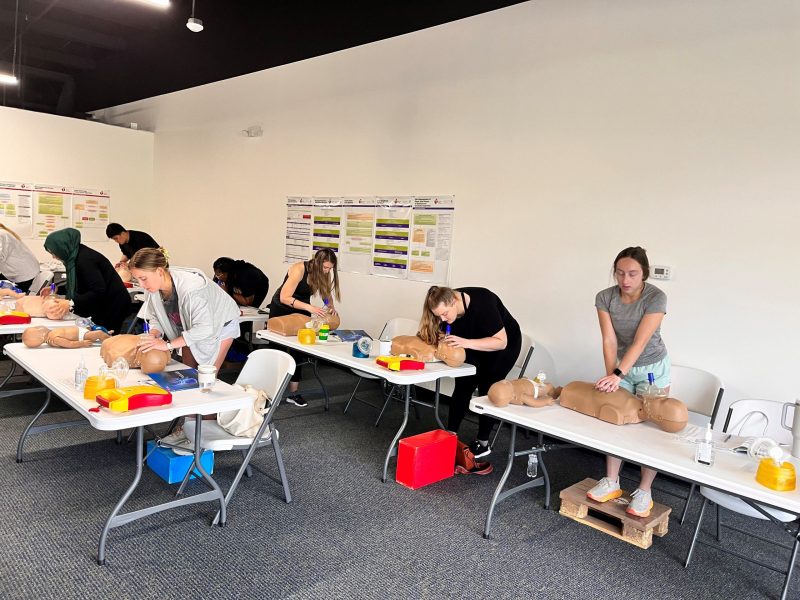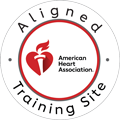When someone suddenly collapses and stops breathing, every second counts. Cardiac arrest affects over 350,000 people outside of hospitals in the U.S. each year, and survival often hinges on how quickly someone nearby can perform CPR and use an AED. Basic Life Support (BLS) training equips healthcare professionals with the skills to act fast and confidently during those critical moments. Whether you’re a seasoned nurse, a new medical student, or a first responder, a BLS class is your foundation in life-saving care.
This article walks you through exactly what to expect in a BLS class—what you’ll learn, how the class is structured, how to prepare, and why choosing the right training center can make all the difference. With insights into skills you’ll master and the career advantages of certification, you’ll be fully prepared to take the next step in your emergency care education.

Understanding BLS: The Foundation of Emergency Care
At its core, Basic Life Support refers to the medical care provided to individuals experiencing cardiac arrest, respiratory failure, or airway obstruction. While often confused with standard CPR, BLS is more advanced, designed specifically for healthcare providers and professional rescuers. It includes high-performance chest compressions, effective ventilation, and rapid AED use. Unlike layperson CPR, BLS also emphasizes team dynamics, coordination, and complex decision-making under pressure.
American Heart Association Standards
Anyone working in a clinical setting—doctors, nurses, EMTs, dental professionals, therapists, and even some medical students—needs BLS certification. It’s often a prerequisite for employment and clinical rotations. Most healthcare employers require certification from the American Heart Association (AHA), which sets the national gold standard. AHA BLS certification is recognized in hospitals, clinics, and medical facilities across the U.S. and must be renewed every two years to stay current with evolving guidelines.
Pre-Class Preparation: Setting Yourself Up for Success
Before your BLS class, you’ll want to prepare to make the most of your training. Wear comfortable clothes you can move around in—jeans or workout gear work well since you’ll be practicing on the floor. Bring a water bottle and any materials requested by the training center, although most programs provide manikins, AED trainers, and any other required equipment.
What to Bring?
Some BLS courses include a blended learning option, such as the AHA’s HeartCode BLS. In this format, you complete the cognitive portion online before attending an in-person skills session. If your course includes this component, make sure to complete it ahead of time and bring your certificate of completion to class. The online portion may require a desktop or tablet and a reliable internet connection.
Call Us Now
Get the Best CPR Class in Tampa Today!
Mental Preparation
Mentally, prepare to engage in active learning. Many students worry about performance or failing the test, but instructors aim to create a supportive, low-stress environment. You’ll receive plenty of guidance and hands-on practice before testing.
Your BLS Class Experience: A Step-by-Step Walkthrough
Once you arrive, your BLS class will typically last four to six hours, depending on class size and format. Expect a mix of short lectures, skills demonstrations, interactive practice, and both written and hands-on assessments. Smaller class sizes often mean more one-on-one feedback and better learning outcomes.
Learning Environment
The atmosphere is designed to be engaging and approachable, even if the content is serious. You’ll spend the bulk of your time practicing on high-fidelity manikins with real-time feedback, which helps you fine-tune your technique. Instructor-to-student ratios are usually low to ensure individualized attention.
High-Quality CPR Techniques
Throughout the class, you’ll master several essential emergency skills. High-quality CPR is the cornerstone of BLS. You’ll learn how to perform compressions at the correct depth and rate—2 inches deep and 100 to 120 per minute—while minimizing interruptions. Proper hand placement and full chest recoil are also emphasized.
Airway Management
Airway management is another key component. You’ll practice techniques like the head-tilt, chin-lift, and jaw-thrust maneuvers to open the airway. Using a bag-mask device effectively takes coordination, and you’ll learn to ensure a good seal and deliver appropriate ventilation volumes.
AED (Automated External Defibrillator) Use
Using an AED (Automated External Defibrillator) is critical during sudden cardiac arrest. You’ll learn when and how to apply the pads, follow the prompts, and ensure safety during shocks. Integrating AED use seamlessly with CPR is crucial to maximizing the patient’s chance of survival.
Team Dynamics
BLS also covers how to respond in a team setting. You’ll practice taking on different roles—compressor, ventilator, AED operator—and develop communication skills like using closed-loop communication. Effective coordination is essential, especially in high-stakes emergencies where every second matters.
Special topics include how to assist someone who is choking, how to perform two-rescuer CPR, and modifications for infants and children. Pediatric CPR requires different compression techniques and depths, and you’ll get hands-on experience in these variations.
Special Situations
Toward the end of class, you’ll complete your skills assessment. Instructors will observe you perform each critical task—from compressions to AED use—to ensure competence. Common mistakes include shallow compressions or forgetting to call for help, but you’ll have time to practice beforehand. If needed, most centers offer retesting opportunities to help you succeed.
You’ll also complete a written exam with multiple-choice questions covering key concepts. Most students pass easily if they pay attention during class and review their materials. Your training center may offer study tips and practice tests.
Assessment and Certification
Once you pass both portions, you’ll receive your official AHA BLS Provider certification. You may get a digital card immediately and a physical card within a few days. This certification is widely accepted and often required by employers before you can start clinical duties.
Advanced Certifications Available
But BLS training is just the beginning of your emergency care journey. Many healthcare professionals go on to earn advanced certifications like ACLS (Advanced Cardiovascular Life Support), PALS (Pediatric Advanced Life Support), or other specialized emergency training. These certifications deepen your skills and open doors to more advanced roles.
Skill Maintenance
Keeping your BLS skills sharp is also essential. Practice every few months if possible, and plan for renewal every two years. Some training centers offer continuing education workshops to help you stay current and confident in your skills.
Career Impact
BLS certification is also a strong addition to your resume, especially if you’re applying for positions in hospitals or emergency departments. It demonstrates not only your clinical readiness but also your commitment to patient safety and professional development.
Why Choose CPR Classes Tampa
American Heart Association Training Site Benefits
If you’re looking for a top-tier training experience, CPR Classes Tampa is an American Heart Association Training Site that offers expert-led, hands-on instruction in a stress-free environment. Our certified instructors focus on real-world scenarios and provide feedback tailored to your learning style. Whether you need BLS for Healthcare Providers, ACLS, PALS, or community CPR and First Aid, we’ve got you covered.
Our training center uses state-of-the-art equipment and offers flexible class schedules—including evenings and weekends—to fit your needs. Group training sessions and corporate packages are also available for teams or healthcare facilities.
Frequently Asked Questions
You may have some questions before signing up. Many students ask,
What if I don’t pass the first time?” Rest assured, we offer support and opportunities for retesting.
Is the class physically demanding? While you’ll be on the floor for compressions, accommodations can be made as needed.
Registration and Logistics
Registering is easy through our website. We offer multiple payment options and clearly outlined cancellation policies. Our training site is conveniently located with ample parking and easy access from major roads.
BLS certification equips you with essential life-saving skills and offers immediate benefits both professionally and personally. You’ll gain confidence, improve your job prospects, and be ready to step up in any emergency.
Conclusion
Invest in your future today by enrolling in a BLS course with CPR Classes Tampa. Whether you’re saving a life in a hospital hallway or responding in your community, the training you receive will prepare you to make a difference when it matters most.


